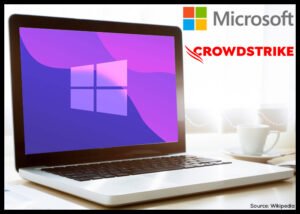
The recent Microsoft outage has sparked significant discussions across the tech industry, and CrowdStrike has played a pivotal role in addressing the concerns. This article delves into the details of the outage, CrowdStrike’s response, and the implications for cybersecurity moving forward.
Understanding the Microsoft Outage
On [Date], Microsoft experienced a significant outage that impacted multiple services, including Microsoft 365, Azure, and Outlook. The disruption caused widespread inconvenience for users globally, halting business operations and leading to a scramble for solutions.
What Caused the Outage?
The root cause of the outage was traced back to a configuration issue within Microsoft’s internal infrastructure. This problem led to cascading failures across various services, highlighting the vulnerability of interconnected systems. Microsoft’s engineering teams worked around the clock to identify the problem and implement a fix.
CrowdStrike’s Swift Response
CrowdStrike, a leader in cybersecurity, was quick to respond to the crisis. Leveraging its advanced threat detection and response capabilities, CrowdStrike collaborated with Microsoft to pinpoint the issue and expedite the recovery process.
CrowdStrike is actively working with customers impacted by a defect found in a single content update for Windows hosts. Mac and Linux hosts are not impacted. This is not a security incident or cyberattack. The issue has been identified, isolated and a fix has been deployed. We…
— George Kurtz (@George_Kurtz) July 19, 2024
Issue Found
CrowdStrike’s forensic analysis revealed that the configuration error allowed for an exploitation route that could have been leveraged by malicious actors. The company’s proactive stance and immediate involvement were crucial in preventing potential security breaches.
Fix Deployed
With the issue identified, CrowdStrike and Microsoft’s teams worked together to deploy a comprehensive fix. This involved not only correcting the configuration error but also reinforcing the system’s defenses to prevent future occurrences. The deployment was executed with precision, ensuring minimal additional downtime for users.
Impact on Businesses and Users
The outage had a profound impact on businesses and individual users alike. Many organizations rely heavily on Microsoft’s suite of services for daily operations, and the disruption underscored the importance of robust contingency planning.
Business Continuity Challenges
For businesses, the outage highlighted several key challenges:
- Operational Disruptions: Companies experienced delays and interruptions in communication, project management, and data access.
- Financial Losses: Downtime resulted in significant financial implications, from lost productivity to potential breaches of contractual obligations.
- Reputation Management: Organizations faced reputational risks, needing to assure clients and stakeholders of their resilience and reliability.
User Frustrations
Individual users faced their own set of challenges:
- Accessibility Issues: Inability to access critical services like email and cloud storage created significant frustration.
- Data Concerns: Users worried about the safety and integrity of their data during the outage period.
- Communication Breakdowns: Personal and professional communications were severely impacted.
Lessons Learned
The Microsoft outage and CrowdStrike’s response provide several valuable lessons for the tech community:
Importance of Proactive Security Measures
Proactive security measures are essential in preventing and mitigating the impact of such outages. CrowdStrike’s rapid response exemplifies the need for continuous monitoring and quick action.
Collaboration and Communication
The effective collaboration between CrowdStrike and Microsoft highlights the importance of communication and cooperation between tech companies during crises. Sharing information and resources can lead to quicker resolutions and enhanced security.
System Resilience and Redundancy
Building resilient systems with redundancies can help minimize the impact of outages. This includes having backup systems and failover mechanisms in place to ensure business continuity.
User Education and Preparedness
Educating users and businesses about potential risks and preparing them for possible disruptions can help mitigate the impact of outages. This includes promoting best practices for data backup, security measures, and contingency planning.
Future Implications for Cybersecurity
The Microsoft outage serves as a stark reminder of the evolving threat landscape and the need for robust cybersecurity practices.
Enhanced Monitoring and Detection
Future strategies should focus on enhancing monitoring and detection capabilities to identify potential issues before they escalate. Advanced threat intelligence and machine learning can play a crucial role in this.
Continuous Improvement
Cybersecurity is an ongoing process that requires continuous improvement and adaptation. Regular audits, updates, and testing are essential to stay ahead of potential threats.
Investment in Security Infrastructure
Investing in security infrastructure is vital for preventing and responding to outages. This includes not only technological solutions but also training and development for cybersecurity professionals.
Conclusion
The recent Microsoft outage was a significant event that tested the resilience of tech infrastructure and highlighted the critical role of cybersecurity. CrowdStrike’s prompt and effective response was instrumental in resolving the issue and preventing further complications. As the tech landscape continues to evolve, the lessons learned from this incident will shape future strategies and practices, ensuring better preparedness and stronger defenses against similar challenges.

